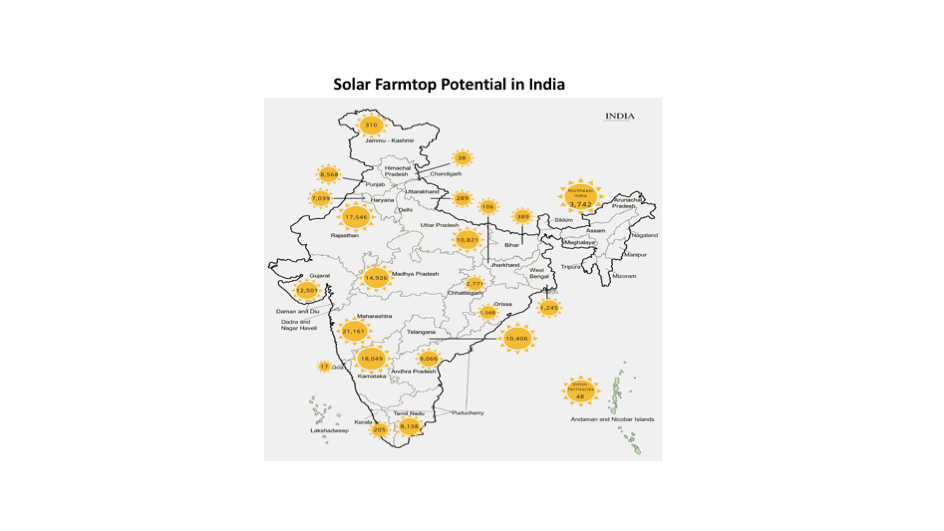- India could use net metered solar pumps under the so-called KUSUM scheme to achieve its 100 GW solar power target by 2022, according to a whitepaper published by Greenpeace, GERMI and IWMI-Tata
- Replacing all agricultural consumption across India with net metered solar pumps would result in up to 150 GW, which is much higher than the government’s distributed solar goal of 40 GW by 2022
- Even if 10% were achieved in the next five years, this would translate to a commissioned solar capacity of 14.8 GW
It is time India refocused its attention to increase solar power capacity of the country to achieve its 100 GW solar power target by 2022 beyond rooftop solar and ground mount utility scale solar power plants. Net metered solar power pumps are an alternative that could help the country achieve its ambitious target.
This is the message from a whitepaper released by Greenpeace, Gujarat Energy Research and Management Institute (GERMI) and International Water Management Institute (IWMI)-Tata Water Policy Research Program. It is called From Rooftops to Farmtops, Augmenting India’s Distributed Solar Goals through net-metered solar pumps.
The Government of India has recently launched a the ‘Kisan Urja Suraksha Utthan Maha Abhiyan (KUSUM) scheme, which supports the usage of grid connected solar pumps to encourage farmers move away from polluting and expensive diesel based gensets. This scheme alone has the potential to ‘revolutionise agriculture as well as the way in which India moves towards the solar goal of 100 GW by 2022’, claims the whitepaper.
If all of agricultural consumption across all Indian states were to be replaced with net metered solar pumps, then the country would surpass the distributed solar goal of 40 GW and achieve in total close to 150 GW. “Even if a modest 10% is achieved in the next five years, that would translate to a very significant commissioned capacity of 14.8 GW,” it reads.
As of March 2018, India had installed a rooftop solar capacity of only 2.41 GW, according to Bridge to India (see PV In India Reaches 24.4 GW By March 2018).
KUSUM: Revolutionary idea
“Farmers can now potentially benefit from India’s distributed solar goal of 40 GW by 2022. The 40 GW solar goal is often thought to be a rooftop solar goal. However, the definition of distributed energy can extend to distributed “Farm-Top’ installations – ‘From Rooftops to Farmtops’,” according to the whitepaper.
It calls KUSUM a revolutionary idea as it will elevate farmers to become net exporters of green solar power to the grid, from being traditional consumers of subsidized power from the grid.
The scheme alone addresses two perennial problems faced by Indian farmers. It will do away with subsidized and unmetered electricity for the farming sector and also provide high-quality day time power to farmers. At the same time, it will also reduce the exploitation of groundwater, say the authors of the whitepaper.
With this scheme, agricultural consumption from the grid would go down, and so would subsidies adding to the state’s finances. It would also become a ‘climate proof’ income for the end users and would work to meet the Central Government’s goal of doubling farm income by 2022, the same time India’s National Solar Mission (NSM) is due to be realized, according to the report.
Maharashtra holds the largest potential for farmtop solar with 21.1 GW, followed by Karnataka with 18 GW, Rajasthan with 17.5 GW, Madhya Pradesh with 14.9 GW, Gujarat with 12.5 GW, among other states.
A number of challenges
Listing the potential risks that can threaten the success of KUSUM, the authors worry about the quality of solar equipment deployed in the field. This equipment must be able to withstand harsh environments to sustain for over 20 years. Real-time monitoring of farm-top systems therefore is a must. Installed systems should have support through a maintenance contract, and payments to suppliers should be time-based and linked to generation of the solar systems. Getting farmers on board is another issue that would need tackling.












